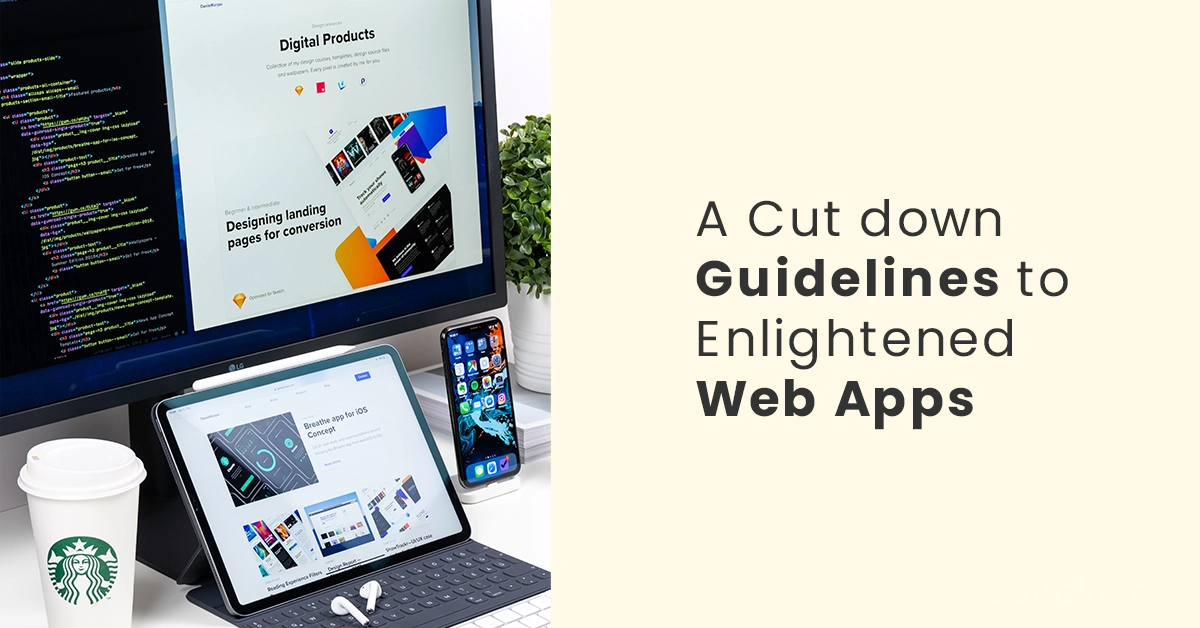Progressive web apps (PWA) are considered to be great apps in the world: they work like a native mobile app even though still working like receptive websites. Push notifications, offline functionality, and Internet accommodating are all main gains. Since the inauguration of progressive web apps (PWA), several businesses have taken great benefit of this technology. They can provide remarkably fetching consumer experiences while accomplishing new user bases simultaneously.
A Cut down Guide to Progressive Web Apps
- Introduction to progressive web apps
- PWAs have many gains over mobile apps
- PWAs also magnify on website features
- The technical components of a PWA
Introduction to Progressive Web Apps
A PWA is a sort of web app that has a few additional aspects geared toward generating a prototypical consumer experience. It's a perfect combination of mobile and desktop application familiarities. On the desktop side, a PWA instantly loads irrespective of network servers because it’s an app developed correspondingly to a website. Every Internet app is constructed upon layers of concept. The negligible augmentation to make a website is HTML. Likewise, you can develop a PWA completely through HTML to make sure that consumers with a poor connection or an older smartphone vary from faster mobile pages (AMP) for several reasons:
-
They behave Like Native Apps
PWAs may utilize closely all of the built-in device’s qualities carefully without trusting an Internet browser. They feature receptive web designs to improve a mobile consumer’s experience. -
App Icons they have
Consumers can easily keep a program icon on their device’s home display, making the program willingly available. This also aids the brand stays on top of their consumer’s attention and improves the probabilities of communication. -
They take a smaller amount of Device Space than Outdated Apps
Contrasting mobile apps that have to be downloaded, PWAs don’t need much space on the consumer’s device since it's introduced on a web server. If consumers desire to install your application on the home screen, it still won't necessitate storage or consistent updates. -
Independent up-gradation
To cover the previous point, these programs are independently upgraded. The end consumer doesn’t require to visit the App Store to download the upgrading and wait until it's installed.
PWAs Also Magnify on Website Qualities
-
Virtually Working on Any Device¬
In the business world, mobile-friendly substitutes to desktop sites are here and now predictable no problem how niche manufacturing is. That’s why PWAs are so appropriate. They can efficiently be working virtually on any device, whether it is a smartphone, a PC desktop, or a tablet computer. -
Consumers Can Approach PWAs with a URL Relatively Downloading Them
They behave like native apps, they are still websites that are stowed on an Internet server. New consumers do not have to go to an app store to download the PWA, which decreases the number of steps essential to set up and use the program. They just require the URL address. -
Easy share of PWAs by Sending a URL
Consumers can appropriately share PWAs by transfer the URL. This can aid spread brand awareness quicker. -
PWAs Advantage From SEO Strategies
PWAs live in web browsers, which means better chances to exploit their search engine optimization (SEO) standards and improve Google locations. By applying SEO techniques, you can determine more discernibility to your PWA.
Common PWA Development Tools
Because PWAs are fundamentally improved websites, their development gears embrace some acquainted frameworks and other new solutions.
-
Knockout
It is a free JavaScript gear that aids developers construct receptive displays. If there are situations when the user interface (UI) of your program would be transformed vigorously, Knockout makes this procedure easy for technicians. -
PowerBuilder
PowerBuilder is one more instrument that may be used with a prepared web solution. Firstly, a programmer creates a manifest — which is a metadata blog — adding the title of the website, its explanation, and a usable icon. There are more particulars that you can alter rendering to your palates such as the orientation of the screen of your PWA, its jargon, and colors. This could be prepared unswervingly on the PowerBuilder site. -
AngularJS (React, Polymer)
AngularJS is considered to be a JavaScript (JS) framework for constructing web applications from scratch. The most current variant delivers technicians with a similar environment for both desktop and mobile solutions. React and Polymer is more naive technologies but also widespread among developers. React is a JS library that was originally generated for UI development. -
Webpack
Webpack is utilized to gather all of your JS resources in a single place, even if it is non-coding data. This is one of the most operative gears to build the front end of the site. For PWAs, Webpack makes it conceivable for developers to use two plug-ins that create the service worker and patent. Both of these features are indispensable for almost any PWA retail. What is more noteworthy, Webpack usage with complex projects and can regulate problems. -
PWA.rocks
Finally, PWA.rocks is a stimulating resource used by both developers and entrepreneurs alike. At this time, you can discover a lot of ground-breaking web app illustrations and understand precisely how the concluding PWA appears and how it works. -
Web App Manifest
If you want to check the working of your PWA, you can utilize a tool like the Web App Manifest to better understand your program. That contains the arrival of dwelling screen icons, display location, and how a page should be loaded first.
Are they future Groundswell?






